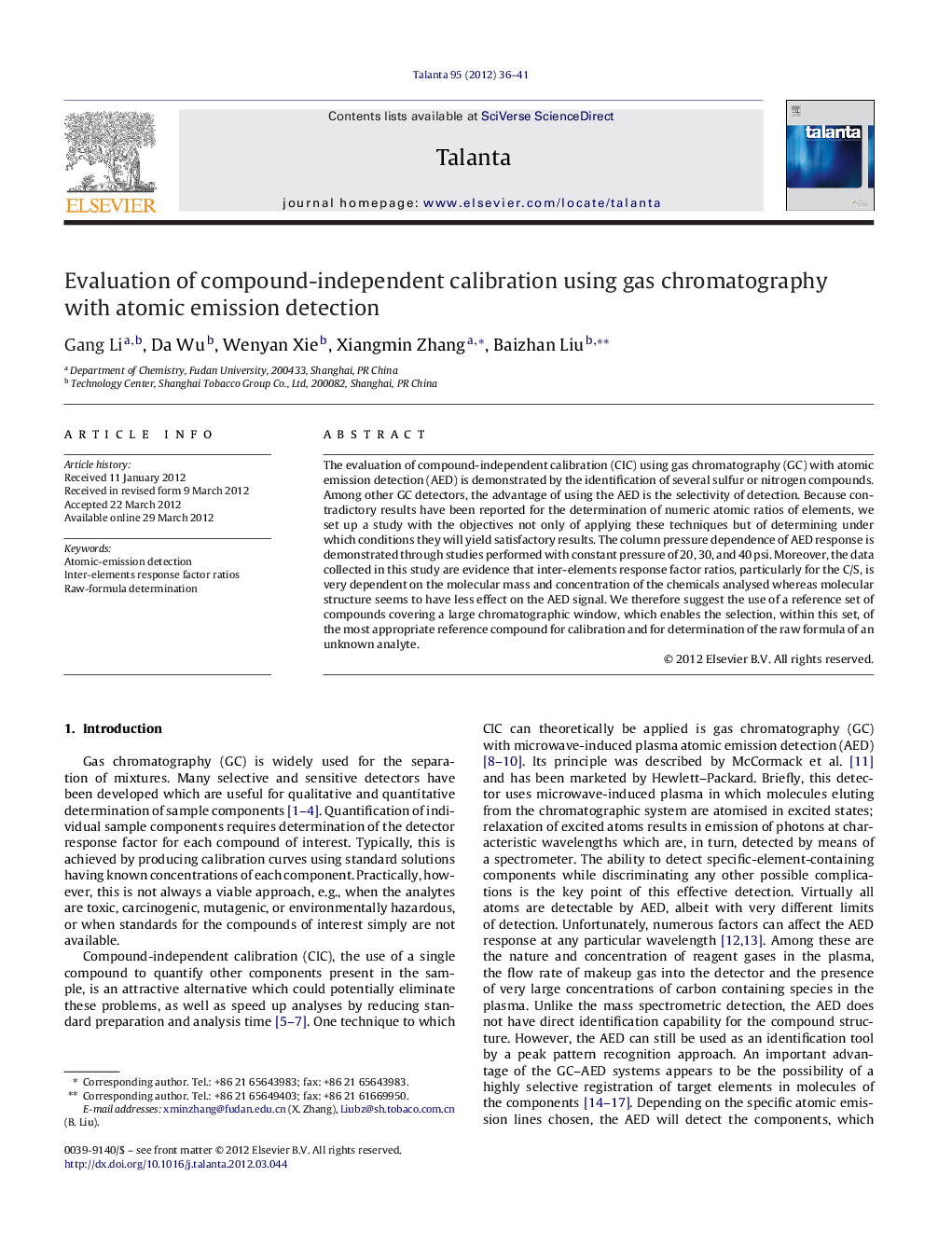| Article ID | Journal | Published Year | Pages | File Type |
|---|---|---|---|---|
| 1244628 | Talanta | 2012 | 6 Pages |
The evaluation of compound-independent calibration (CIC) using gas chromatography (GC) with atomic emission detection (AED) is demonstrated by the identification of several sulfur or nitrogen compounds. Among other GC detectors, the advantage of using the AED is the selectivity of detection. Because contradictory results have been reported for the determination of numeric atomic ratios of elements, we set up a study with the objectives not only of applying these techniques but of determining under which conditions they will yield satisfactory results. The column pressure dependence of AED response is demonstrated through studies performed with constant pressure of 20, 30, and 40 psi. Moreover, the data collected in this study are evidence that inter-elements response factor ratios, particularly for the C/S, is very dependent on the molecular mass and concentration of the chemicals analysed whereas molecular structure seems to have less effect on the AED signal. We therefore suggest the use of a reference set of compounds covering a large chromatographic window, which enables the selection, within this set, of the most appropriate reference compound for calibration and for determination of the raw formula of an unknown analyte.
► The analyses are carried out on the GC–AED coupled with deans switching device. The relationship between elemental response factor and column pressure is studied. ► C/N and C/S factor ratio significantly depend on analyte concentration. ► C/H and C/N factor ratio are independent of molecular weight. ► Increasing molecular weight will decrease the C/S response factor ratio.
